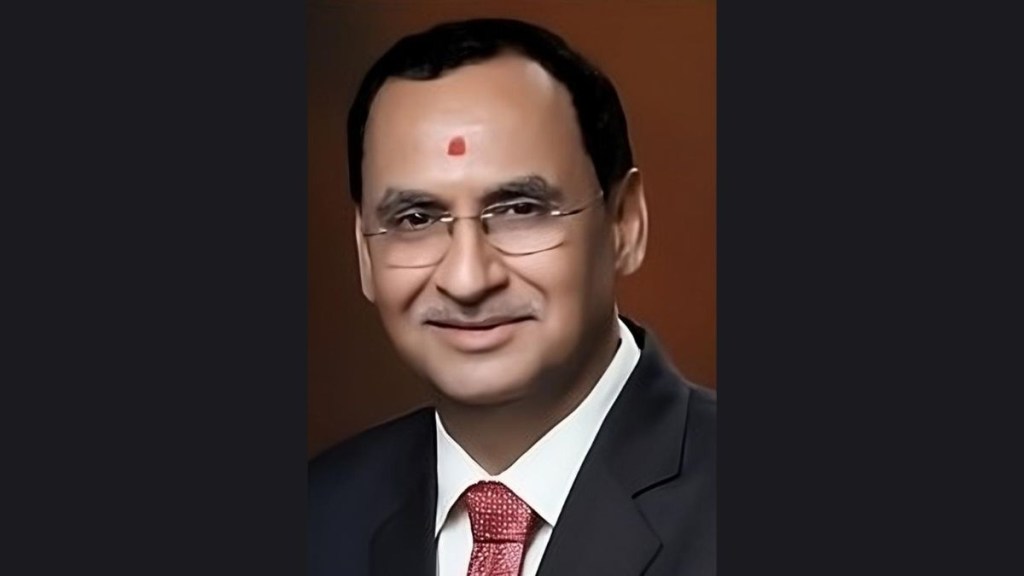Dengue is the most prevalent mosquito-borne disease globally. According to a 2024 report published in The Lancet Regional Health journal, there are around 100–400 million infections per year and nearly half the world’s population is at risk.
The World Health Organization (WHO) maintains that about half of the world’s population is now at risk of dengue. In India, West Bengal, Uttar Pradesh, Punjab, Haryana, Delhi, Gujarat, Kerala, Karnataka and Tamil Nadu are the high dengue burden states.
Recently, Karnataka declared dengue an epidemic disease following a continued spike in dengue cases. This year, higher rates of dengue have been experienced in women and children as compared to previous years. Children who are contracting the disease for the first time generally exhibit milder symptoms and less severity than adults. However, the recent surge in dengue cases is marked by sharper symptoms, including a steep rise in temperature up to 104 to 105 degrees Fahrenheit.
In an e-mail interaction with Financial Express.com, Dr. Naveen Thacker, President, International Pediatric Association (IPA) highlighted need to develop sustainable, long-term strategies to protect children from future epidemics, particularly in light of changing climate patterns. Excerpts:
What is the current status of dengue in India? How it is different from the global trends?
Dengue remains a major health challenge in India, with an estimated 33 million clinically apparent cases each year, accounting for about one-third of the global dengue burden. Although the disease is widespread across all states, many cases go unreported, contributing to the underestimation of its true impact. The incidence of dengue has been steadily increasing, from 10,137 reported cases in 2006-2008 2 to 188,401 in 2017, and reaching 233,251 in 2022. 3 In the year 2024, India reported 32,091 cases of dengue, recorded in the month of June. Globally, there are about 390 million infections 5 , 500,000 hospitalizations 6 , and 40,500 deaths annually, 7 with Asia accounting for 70% 8 of the burden and India contributing to 30% of it. Dengue, once prevalent mainly in cities like Surat, is now widespread across India, emerging as a critical threat to health. It is further driven by the tropical climate and the monsoon season, providing ideal conditions for mosquito breeding and disease transmission.
How dengue manifestation in children has evolved over the years? What are some concerning trends?
The foremost thing to understand is that dengue affects children more critically than it impacts adults. Additionally, there are two things that have to be understood in this context. Firstly, when the infection occurs for the first-time, it may not be very severe. However, if the child experiences it for the second time, the infection brings serious complications like dengue haemorrhagic fever, or the dengue shock syndrome, which increases the fatality rate in children.
Karnataka has declared dengue an epidemic disease. Dengue incidences are increasing in countries where it was not previously reported. According to you what are possible reasons?
Several factors contribute to the rising number of dengue cases, including increased travel, climate change and the migration of mosquitoes. Rapid and unplanned urbanization also plays a major role, particularly in cities that may have inadequate infrastructure, which act as ideal breeding grounds for mosquitoes. Climate change, also fuelled by deforestation, creates favourable conditions for the breeding of mosquitoes. The monsoon season in India acts as a catalyst, leading to dengue transmission across the country.
Is there any prevalence of dengue complications among children? What is the status in India?
As children are more vulnerable to dengue and may develop a severe infection, this may lead to complications like dengue shock syndrome and haemorrhagic fever. While not all cases result in these severe forms, dengue shock syndrome is particularly common in children. This further results in plasma leakage and fluid accumulation in the abdomen and lungs. These complications arise due to delayed diagnosis and consultation. Parents often take action after several days of continuous fever, and once it subsides, they assume that the illness is resolved. Unfortunately, complications often emerge when the fever goes away. Dengue continues to affect the child’s body, potentially leading to organ failure and thus lead to fatal consequences.
What diagnostic and treatment approaches pediatricians are taking to tackle dengue among children?
To diagnose dengue, we as pediatricians and clinicians commonly use rapid antigen tests and Enzyme-Linked Immunosorbent Assay (ELISA) tests, depending on their availability. Once diagnosed, the focus is on closely monitoring key parameters, such as Complete Blood Count (CBC), to check for hemoconcentration and platelet levels, which help indicate plasma leakage. In case of severe dengue, chest X-ray and frequent ultrasounds are conducted to monitor fluid accumulation in the lungs and the abdomen. Pediatricians also assess renal and hepatic functions, as these can be compromised during the progression of dengue fever. The emphasis is on supportive care, meticulous fluid management, and constant monitoring to prevent further complications that may occur in children.
What are the challenges that doctors face with respect to dengue management in children? How it is different from adults?
Managing dengue in children presents unique challenges compared to adults. Since there is no specific medication for dengue, treatment relies on supportive care, especially careful fluid management, which requires constant monitoring of the child’s condition. Children are more prone to severe complications like dengue shock syndrome, demanding greater vigilance and expertise. Additionally, myths and misconceptions about treatment often leads to a delay in diagnosis and opting for the right course of treatment. Children’s symptoms are harder to interpret, and their less developed immune systems make them more susceptible to rapid deterioration. Thus, treating dengue in children requires a cautious, personalised approach with specialized pediatric care and increased public education to optimize outcomes for young patients.
What are the observations of International Pediatric Association? Are there any recommendations for the government?
The International Pediatric Association has observed that dengue prevention and control requires a strong emphasis on public health measures. Vector control is critical along with increasing public awareness of prevention methods. The Aedes mosquito, which transmits dengue, has evolved to be active during daylight hours, necessitating targeted prevention strategies to safeguard children and adults against the disease. Beyond the existing government efforts, there is a need to enhance vector control programs, launch public education campaigns, and manage the factors like infrastructure and sanitation to eliminate breeding sites. Increased investment in research for better prevention methods, including vaccines and innovative vector control technologies, also play a crucial role in disease prevention. Dengue is a serious threat to public health that is claiming lives and impacting individuals significantly. With vaccines now approved and licenced to be administered in endemic countries globally, it is essential that the processes of trials and approvals are expedited to ensure timely immunization of adults and children. Additionally, preparing healthcare systems, particularly in endemic areas, can improve the handling of dengue outbreaks, especially from the perspective of protecting children.
Climate Change is often presented as one of the factors of increasing dengue incidence. What needs to address the growing burden of dengue infections among vulnerable populations like children?
Climate change is a significant contributor to the rising incidents of dengue which affect vulnerable populations such as children. To address this growing burden, a comprehensive and adaptive approach is critical. Enhancing surveillance systems integrating climate data with health information can enable more accurate predictions and targeted interventions. Additionally, innovative vector control strategies must be focused on to counter the changing mosquito habitats and breeding patterns resulting from climate change. Awareness also plays a crucial role which can be addressed by developing tailored programs for children and adults that focus on prevention and early symptom recognition. By intensifying research into climate-resilient prevention strategies and pediatric-focused treatments combined with industry collaborations—spanning health, environment, urban planning, and education—is needed to create holistic solutions. By implementing these measures, we can build a more robust defence against dengue and adapting effectively to the existing challenges.
Could you also share some statistical details on dengue infection among children and how it is increasing both India-wise and globally?
Dengue continues to be a growing health concern globally and particularly in India, where the burden is significant. An estimated 30-50 million clinically apparent dengue cases occur in India each year, contributing to nearly one-third of the global dengue burden. The overall seroprevalence of dengue virus (DENV) infection is high at 49%. Notably, children are significantly affected, with 28% seroprevalence among those aged 5-8 years and 41% among those aged 9-17 years. This highlights the increased vulnerability of children to dengue infection, which poses severe health risks, including hospitalization. The prevalence of dengue varies significantly across India, with the highest seroprevalence reported in southern (77%), western (62%), and northern (60%) regions. Urban areas exhibit higher infection rates (71%) compared to rural areas (42%), which often results in higher exposure risks for children living in densely populated urban settings. 10 Globally, dengue incidents have surged in the past 50 years, highlighting the urgent need for a multi-pronged approach—combining vector control, public health measures, and most importantly, vaccine development—to protect vulnerable populations, particularly children.
Anything else that you would like to add?
Dengue continues to be a threat to public health worldwide and the disease’s increasing prevalence, especially during monsoons, has replaced traditional illnesses like malaria as the primary health threat. Dengue particularly affects children and pregnant women who are at higher risk of complications and mortality. This is further challenging due to delay in diagnosis, complex fluid management, and the potential for mismanagement, highlighting the need for enhanced paediatric care. Prevention strategies, including public awareness and intensified vector control, need to be prioritized. In addition, serious consideration of vaccination programs is also crucial in addressing the growing threat of dengue as the incidence increases. Given the heavy toll dengue takes annually, immediate action is necessary.







